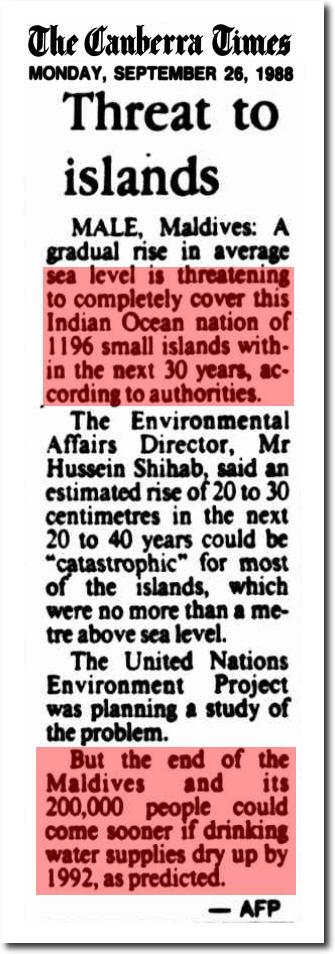Everybody is frantically posting every computer simulation, model, prediction, etc. that they found on the web and I don't have the time to explain the difference between those and reality for every case. Models aren't reality, only direct observations/measurements are. Lot's of models now mix real measurements with simulated "data" to create the appearance of objectivity, another trap to behold.
A good example for the distinction between model and data is the "Drowning of the Maldives" hysteria which has been predicted forever. After all, the models claim a hockey stick warming and sea level rise. The science is settled, only deniers disagree.
Maldives are drowning in 1837 (!) -- the hysteria began early.

https://trove.nla.gov.au/newspaper/article/4173156
Drowning again predicted in 1988

http://trove.nla.gov.au/newspaper/article/102074798
Perpetual drowning in 2018, it just never stops

So much for the models but what about reality?
Curb your enthusiasm, the Maldives have.... grown bigger, the oceans declined. The old man shows you were the sea line was when he was younger. Real observations vs. fake modelling.

Observational facts do not verify the story of a rapidly rising sea level in the Maldives. On the contrary, stability in sea level is well documented for the last 30-40 years.... As their [IPCC] idea is not based on actual field studies only modeling, our observational facts should be held superior.
http://myweb.wwu.edu/dbunny/pdfs/Evid_Based_Climate_Sci/Ev_Based_Climate_Sci_Chap7.pdf
That objective led a fieldwork team to the Maldives, and resulted in a conclusion that sea level in the islands fell by approximately 30 cm during the past few decades.
https://www.sciencedirect.com/science/article/pii/S0921818105000780
















